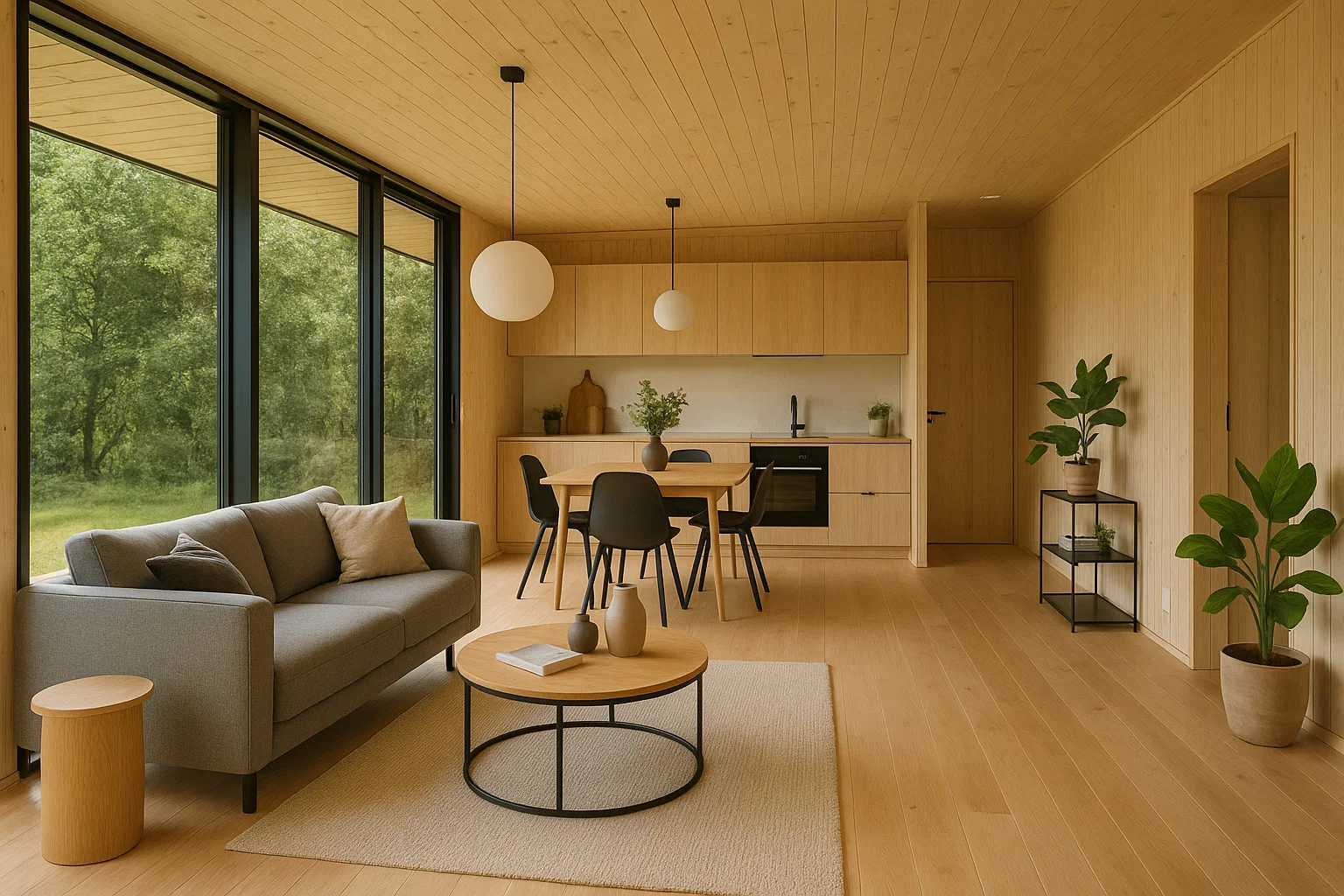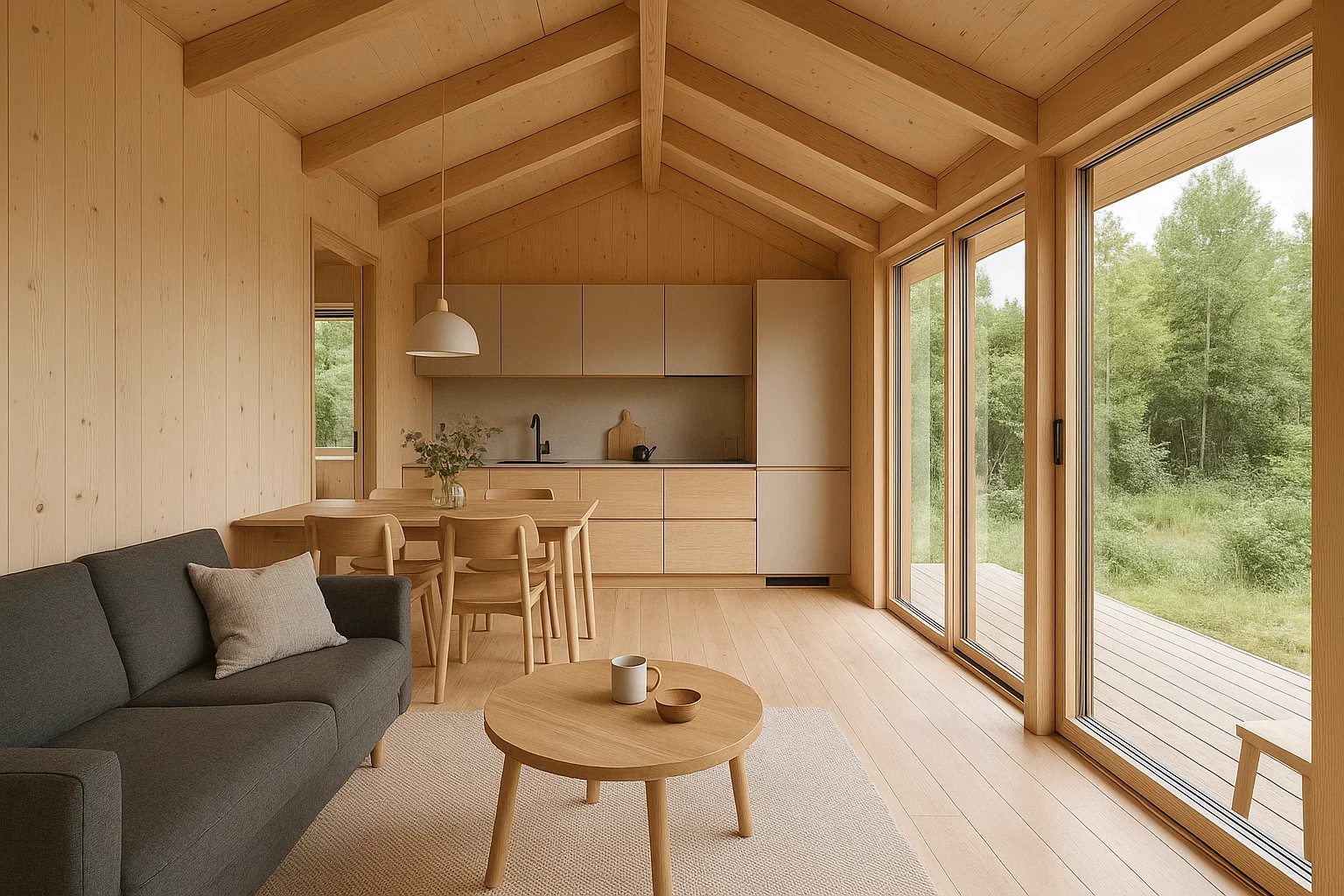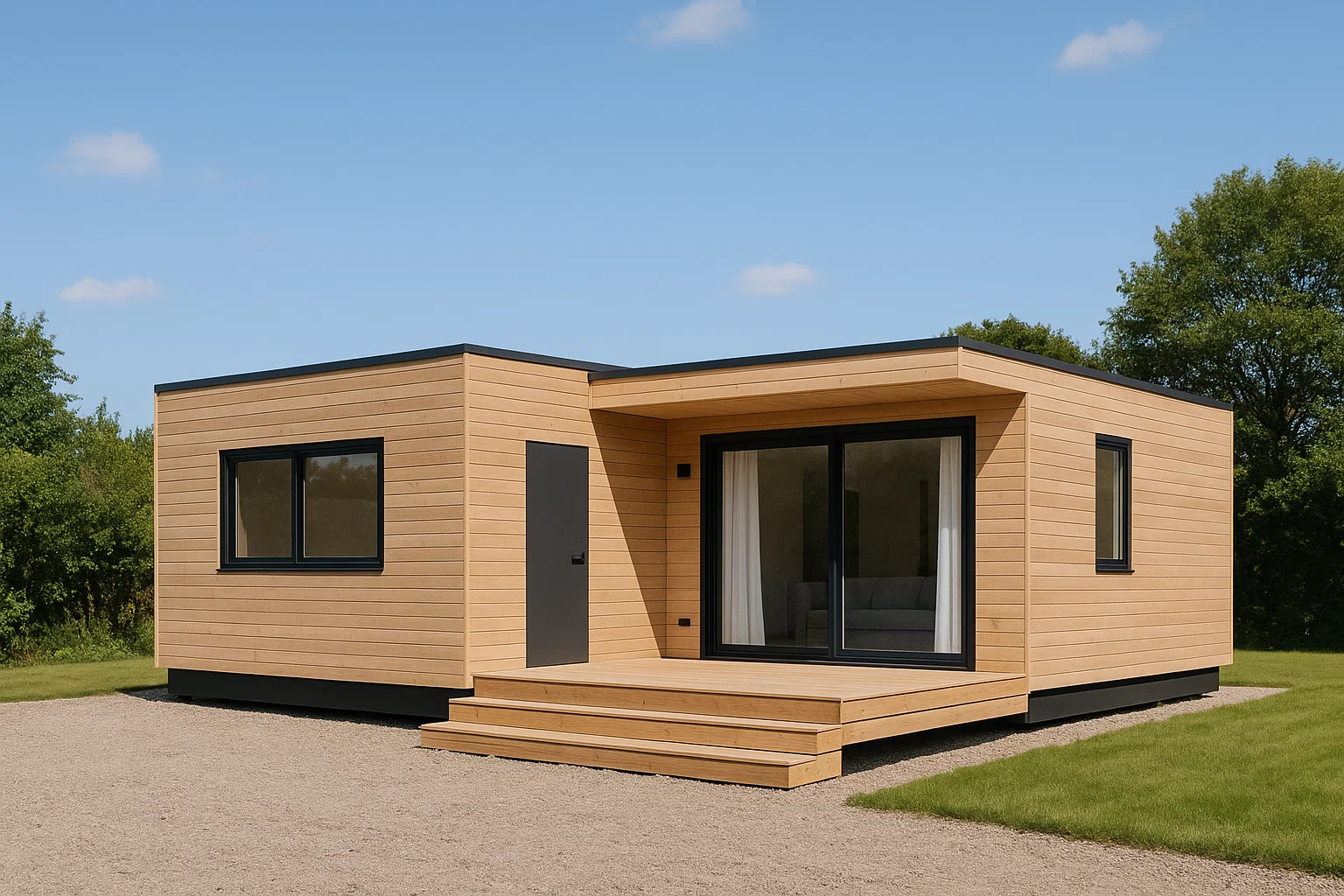Architecture, House Plans
The Complete Guide to the Best Modular Homes: What You Need to Know in 2025
Introduction to Modular Homes
Modular homes are changing how people build houses. They are not new, but more people want them today.
A modular home is built in parts inside a factory. These parts are called modules. Once the modules are done, they are moved to your land and put together like puzzle pieces.
Each module is strong and built with care. The factory setting keeps out rain and delays. Workers build faster and with fewer mistakes.
Once the home is set on the foundation, it looks just like any other house. Most people can’t tell it was built off-site.
Modular homes follow the same building codes as traditional homes. That means they must be safe, solid, and up to local rules.
This kind of home works for many people. It can be small or large. You can choose the layout, look, and finishes.
As housing costs rise, more people want homes that are quicker to build and easier to manage. Modular homes are meeting that need.
They save time, often cost less, and are built with care. That’s why they are getting more popular every year.
What Are Modular Homes?
Modular homes are houses built in a factory, not at the final site.
Each part of the house is called a module. These modules are built indoors, away from weather and dust.
After building, workers load the modules on trucks. They deliver them to the place where the house will sit.
Cranes lift the parts and place them on a solid foundation. Then workers join the parts together.
From the outside, it looks like any other house. Inside, it feels the same too.
Modular homes follow the same building rules as site-built homes. They are safe, sturdy, and built to last.
You can get one floor or more. You can choose the style, color, and layout.
Some people think they are like mobile homes. They are not. Modular homes are real houses. They do not move.
They are built to stay in one place, just like regular homes. They also grow in value over time.
People choose modular homes for many good reasons. They are fast to build and often cost less.
They give you control over the design and the budget. You know what to expect. That’s a big plus.
A Brief History of Modular Homes
The idea of modular homes started over 100 years ago.
In the early 1900s, some companies sold house kits by mail. People ordered them, and the parts came by train.
Buyers then built the home piece by piece on their land. These kits were the first step toward factory-built homes.
After World War II, the need for quick housing grew fast. Soldiers returned home and started families.
Builders had to work faster. Factory-made homes helped meet that need.
In the 1950s and 60s, better tools and new methods made modular homes more common.
By the 1980s, these homes looked and felt like regular houses. They came in many sizes and styles.
In the 2000s, new tech made building even faster and better. People saw that modular homes could be strong, smart, and stylish.
Today, they are not just a cheap choice. Many are large, well-built, and full of modern features.
More people are choosing modular homes to save time and money without giving up quality.
How Modular Homes Work
Modular homes are built in parts inside a factory. These parts are called modules.
The factory team builds each module under one roof. They use tools, machines, and a clear plan.
Bad weather does not slow them down. The process stays on track from start to finish.
Each module gets walls, floors, wiring, and even plumbing. Most work is done before the modules leave the factory.
Once the modules are ready, workers load them onto trucks. They travel to the building site.
At the site, a crane lifts each module onto a foundation. Then the crew connects them like puzzle pieces.
They bolt the parts together and seal every joint. The house becomes one strong, solid unit.
After that, they finish the roof, siding, and interior details. This step may take a few days or weeks.
Inspectors check the home during and after each stage. They make sure it meets all safety codes.
Once complete, the home is ready to live in. It looks and feels like a regular house.
The whole process is quicker and cleaner than old-style building. It also uses less waste and fewer delays.
That’s how modular homes work from start to finish. Simple. Smart. Fast.
Types of Modular Homes
Benefits of Modular Homes
Modular homes offer many clear advantages. They help save time, money, and stress during the building process.
Cost Efficiency
Modular homes often cost less than site-built homes. Factories buy materials in bulk, which lowers the price.
Labor costs are also lower. Fewer workers are needed, and they build faster.
Fewer delays mean fewer surprises. You can plan your budget and stick to it.
Faster Build Time
Building in a factory cuts time by weeks or even months.
While your land is being prepared, the home is already being built.
Once the modules arrive, setup takes days, not months.
You can move in much sooner than with a traditional house.
Energy Efficiency and Sustainability
Modular homes are sealed tightly. This helps keep heat or cool air inside.
Good insulation and smart windows save energy and lower bills.
Factories create less waste than building on-site. They reuse leftover wood and other materials.
Some modular homes also use eco-friendly parts, like solar panels or water-saving fixtures.
High-Quality Construction
Work done indoors means better control and fewer problems.
Every module is built by trained workers using clear plans.
Homes are inspected often to catch mistakes early.
They meet the same safety rules as other homes and often go beyond them.
The final result is strong, safe, and made to last.
These benefits make modular homes a smart choice for many people.
Comparing Modular Homes to Traditional Homes
Modular homes and traditional homes both provide shelter, but they are built in very different ways. Here’s how they compare.
Construction Speed
Modular homes are much faster to build. Most are ready in a few months.
Traditional homes take longer. Weather delays and labor issues can stretch the timeline.
With modular homes, much of the work happens in a factory. There’s no waiting on good weather.
Cost Differences
Modular homes usually cost less. Factory work is more efficient and uses less labor.
Site-built homes often have extra costs. Delays, material waste, and long build times all add up.
Modular homes help you stay on budget. You know most of the costs upfront.
Customization Options
Both types of homes can be customized.
With modular homes, you can choose layouts, colors, floors, and more.
Traditional homes may offer more unique shapes and sizes. But modular homes now have many of the same choices.
You can still design a home that fits your style and needs.
Durability and Lifespan
Modular homes are strong. They are built to travel and be placed by crane.
They meet the same codes as traditional homes. Sometimes they even go beyond those rules.
With care, a modular home can last just as long as any other house.
In short, modular homes give you speed, savings, and strength. All without giving up comfort or style.
Design Options and Flexibility
Modular homes offer many design choices. You are not stuck with one layout or style.
Floor Plans and Layouts
You can choose how many rooms you want. You can pick where each room goes.
Want an open kitchen? You can have that. Need a quiet office? That works too.
Some plans come ready-made. Others let you adjust walls, doors, or windows.
You can find something that fits your space and your life.
Interior Design Choices
Inside the home, you can pick your own look. Choose the paint, floors, cabinets, and lights.
You can go for a clean modern feel or a cozy classic one.
You control how your home looks and feels on the inside.

Exterior Finishes
The outside matters too. You can choose brick, stone, or siding.
You can pick the roof style, porch design, and color scheme.
Your home will look just the way you want it. It can match the rest of your neighborhood or stand out.
In short, modular homes are not one-size-fits-all. You get options. You get control. You get a home that fits you.
Myths and Misconceptions
Many people still believe wrong things about modular homes. Let’s clear up some common myths.
“Modular Homes Are the Same as Mobile Homes”
This is not true. Modular homes are real houses. They are set on a foundation and do not move.
Mobile homes are built to different rules and can be moved. Modular homes must follow the same rules as site-built homes.
Once placed, a modular home is fixed in place like any other house.
“They Don’t Last as Long”
Wrong. Modular homes are built strong. Each part must survive transport and setup by crane.
They use the same materials as regular homes. Some are even stronger because of the way they are built.
With good care, they can last for many decades.
“Limited Design Choices”
Not anymore. You can pick from many styles, sizes, and layouts.
You can change the floor plan, pick your finishes, and even add custom rooms.
From roof to floor, you choose what fits your taste.
Modular homes have grown a lot. They are no longer plain or simple unless you want them that way.
Costs Involved in Building a Modular Home
Financing and Insurance for Modular Homes
Buying a modular home often needs a loan. Just like with other homes, you also need insurance.
Loan Options
Many banks and credit unions offer loans for modular homes. These work like loans for site-built homes.
You will need good credit, income proof, and a down payment.
Some loans cover just the build. Others cover both the build and the land.
Mortgage vs. Construction Loans
A mortgage is a long-term loan. It starts after the home is built and ready to live in.
A construction loan is short-term. It helps pay for building the home.
Some lenders offer both in one plan. This makes the process easier.
Ask your lender what they offer before you start.
Getting the Right Insurance Policy
You need insurance during and after the build.
During building, the home needs coverage for transport and setup.
Once complete, you’ll need full home insurance. This protects your home from fire, storms, or theft.
Rates depend on location, size, and home value.
Talk to a few insurance agents. Compare their prices and what they cover.
Having the right loan and insurance helps keep your home safe and your budget steady.
Zoning Laws and Permits
Before building a modular home, you must follow local rules. These rules are called zoning laws.
Understanding Local Regulations
Zoning laws say where you can build a home. They also set rules for the size and type.
Some places do not allow modular homes. Others may have limits on style or size.
Check with your local office before you buy land. Ask what kind of homes are allowed there.
This step saves time and avoids problems later.
Working With Local Authorities
You must apply for permits before you build. These include building, plumbing, and electrical permits.
Your builder may help with this part. They often know the steps and who to talk to.
Inspectors will check the work at different stages. They make sure everything is safe and follows code.
You can’t skip this process. Building without permits may lead to fines or delays.
Knowing the rules early makes the build smoother and keeps your home legal.
Sustainability and Green Building
Modular homes can be good for the planet. Many are built with care to use less and waste less.
Eco-Friendly Materials
Builders often use wood and other items that are safe and clean.
Some materials are recycled or come from local sources.
Using better products helps cut down on harm to nature.
Energy Saving Features
Modular homes seal tight. This keeps heat in during cold months and cool air in during hot days.
Many use LED lights, smart thermostats, and low-flow water taps.
Some even come ready for solar panels or rainwater tanks.
These features help lower power and water bills.
Waste Reduction
Factories build parts with set plans. They buy only what they need.
Leftover wood, pipes, or wires can be used again in other homes.
Less trash goes to landfills. That helps keep the planet clean.
When you pick a modular home with green features, you help the earth and save money over time.
Choosing a Modular Home Builder
Picking the right builder is a big step. A good builder makes the whole process easier and less stressful.
What to Look For in a Builder
Start with experience. Find a builder who has done many modular homes before.
Check their past work. Ask to see photos or visit finished homes.
Read reviews from other buyers. Look for clear signs of honesty and good service.
Make sure they are licensed and insured. This protects you and your money.
Questions to Ask Before Signing
Ask what is included in the price. Will they handle permits and land work?
Find out how long the whole build will take. Ask what could cause delays.
Ask how they handle changes or upgrades. What happens if you want to change a room size?
Check if they offer a warranty. Know what it covers and how long it lasts.
Get all answers in writing. Clear terms help avoid problems later.
Choosing the right builder helps you get the home you want with less worry and delay.
The Future of Modular Homes
Modular homes are getting smarter, faster, and more advanced. Here’s how the future is taking shape.
Smart Technology Integration
New modular homes now come with built-in smart tools. You can control lights, heat, and locks from your phone. Smart thermostats learn your habits. Smart lights help save energy. Security systems send alerts to your device. These features make homes safer and easier to manage.
AI and Robotics in Modular Construction
Robots and computers are changing how modular homes get built. Machines now do tasks that once took days. They lift, cut, and place parts with great accuracy. AI software helps plan better layouts and reduce waste. This means faster builds and fewer mistakes.
3D Printing and Automation
3D printing is the next big step. Large machines can print walls and other home parts. This is already happening in test sites around the world. These homes use less material and cost less to build. In the future, full homes may be printed in a single day.
Conclusion: Is a Modular Home Right for You?
If you’re seeking a smart, efficient, and stylish alternative to traditional construction, modular housing offers a compelling solution. With faster build times, customizable designs, and cutting-edge construction methods, the modular movement is redefining modern living.
At Nyolenju Structures, we specialize in bringing your vision to life through innovative design and precision building. Whether you’re dreaming of a cozy retreat or a contemporary family home, our expert team is here to guide you every step of the way.

Ready to explore modular living?
📞 Contact Nyolenju Structures today to schedule a consultation.
🏗️ Let’s build your future—smarter, faster, and beautifully—with Nyolenju Structures.
FAQs
1. What’s the difference between modular and manufactured homes?
Modular homes are permanent structures on a foundation, while manufactured homes are mobile and subject to HUD codes.
2. Can modular homes be customized?
Yes! From layouts to finishes, modular homes can be tailored to your lifestyle.
3. How long do modular homes last?
With proper maintenance, modular homes can last 50+ years—just like traditional homes.
4. Are modular homes energy-efficient?
Absolutely. Many come with tight construction, eco-friendly materials, and energy-saving systems.
5. Do modular homes appreciate in value?
Yes. When placed on owned land, modular homes can appreciate just like site-built homes.


